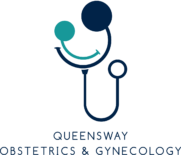
Reproduced with permission from trialoflabour.to
Trial of Labour After Caesarean (TOLAC)
When you have had a previous caesarean section you generally have two choices on how to deliver in your next pregnancy:
- Trial of Labour after Caesarean Section (TOLAC): an attempt at a vaginal delivery. Most women will be successful and have a vaginal birth after caesarean (VBAC).
- Vaginal Birth after Caeseran Section (VBAC): a successful TOLAC resulting in a vaginal delivery.
- Elective Repeat Caesarean Section (ERCS): a planned repeat caesarean section (CS).
Are you a candidate for a TOLAC?
Most people who have had one previous CS can attempt a vaginal birth in their next pregnancy. You may NOT be a candidate if you have had:
- Multiple CS
- Previous classical CS or uterine rupture
- Pregnancy complications requiring a CS such as placenta previa or need for an urgent delivery
- A CS less than 12 to 18 months ago

75% of people who attempt a TOLAC will have a successful vaginal birth after Caesarean (VBAC). If you have had a previous vaginal delivery this increases to 90%.
Increased chance of successful VBAC if…
- You have previously given birth vaginally
- The reason for your previous CS is
not a factor in this pregnancy (i.e. breech presentation, placenta previa) - Your labour begins on its own
(spontaneous) - You are less than 30-35 years old
with an uncomplicated pregnancy
Decreased chance of successful VBAC if…
- You go past your due date
- You are significantly overweight (Body Mass Index > 30)
- You need to have your labour induced
- Your baby is estimated to weigh more than 4000g (8 lbs 13 oz)
Reasons you may want to choose a TOLAC
- Shorter hospital stay, generally a quicker recovery, no activity restrictions (i.e. heavy lifting)
- Desire to experience giving birth vaginally
- Avoidance of major abdominal surgery and the risks associated with ERCS (i.e. increased
blood loss, future surgical complications) - Greater chance of an uncomplicated birth in future pregnancies, as the risks of CS increase with
each surgery
Earlier start to breastfeeding - and better success with breastfeeding at three to six months
- Lower risk of breathing problems in your baby immediately after birth
Reasons you want to choose an ERCS
- Ability to plan the date and time of the birth and knowing what to expect based on past
experience - Avoidance of labour and risks associated with TOLAC including risk of uterine rupture (0.5%
with a TOLAC and 0.03% with ERCS)

Risks associated with TOLAC:
- Most common risk is requiring a CS during labour which has an increased risk of blood loss, surgical complications, and infection compared to an ERCS
- Most serious risk is the scar on your uterus opening during labour (uterine rupture) which happens to 1 in 200 people who attempt a TOLAC (99.5% chance this will not happen), less if you have had a previous vaginal delivery
- Uterine rupture can result in serious but extremely RARE problems for your baby including death or brain injury (3-8 in 10,000 babies) or for you including increased bleeding or removal of your uterus (hysterectomy)
Risks associated with a C-Section
- Infection, bleeding, blood transfusion, and surgical injury to bowel, bladder, ureters
- Increased risk of blood clots in lungs or legs around time of delivery
- May require a CS for all future pregnancies.
- Each future CS carries increased surgical and pregnancy risks. The largest is the risk of an abnormal placenta in future pregnancies which may cause severe bleeding and require a removal of your uterus (hysterectomy) at your delivery.
- Death to the pregnant person is higher with a ERCS than a TOLAC but overall extremely low (0.013% with ERCS and 0.004% with TOLAC)

Uterine rupture happens to 1 in 200 people who attempt a TOLAC
If you are planning a TOLAC:
Go to the Labour Assessment Unit if you are in labour or think your wter has broken. When you are in active labour you will require coninuous monitoring of your baby’s heart rate and regular cervical exams to ensure your labour is progressing safely. An epidural is encouraged in case a c-sectin is required urgently. Oxytocin (a medicine to help give you contractions) can be safely used.
Can I have my labour induced if I had a previous c-section?
Yes, although there is a small increase in the risk of athe scar on your uterus opening (uterine rupture) during labour with an induction. The increased risk depends on the type of induction used, but generaly can double the risk (1.1% risk of rupture). There are methods to safely induce lbour when you have had a previous c-section. This includes using a balloon catheter to open the cervix in early labour breaking the waters and/or using oxytocin to give you contractions. Some people choose to have an induction of labour if they do not go into labour on their own while others choose to have a repeat c-section if they will require an induction.
If you are planning a c-section:
You should discuss with your care provider what you want done if you go into labour before your scheduled c-section. Going into spontaneous labour increases your chances of having a successful vaginal birth and many people who planned a c-section will try a TOLAC if they go into spontaneous labour.
Key Points
TOLAC and c-section are safe options for future delivery after a c-section as there is a very low risk of serious harm to you and your baby with either option.
A successful VBAC has the least complications for you and your baby while a c-section during a TOLAC has the most risk for complications.

Trial of Labour after Caesarean Section (TOLAC)
Decision Aid
Key Points about choosing between TOLAC and ERCS
TOLAC and ERCS are safe options ffor future delivery after a c-section as there is a very low risk of serious harm to you and your baby with either option.
A VBAC has the least complictions for you and your baby while a c-section during a trial of labour has the most risk for complications.
Making a Decision:
You may find it helpful to use the table below as you decide whether to plan a TOLAC or ERCS. Add checkmarks beside reasons you would choose a birth option based on what benefits and risks matter most to YOU. You can also add other reasons that are important to you.
☐ ☐ ☐ Does not matter ☐ ☐ ☑ Matters a little ☐ ☑ ☑ Matters somewhat ☑ ☑ ☑ Matters a lot
| Reasons to plan a TOLAC | How much does it matter to you | Reasons to plan a C-Section | How much does it matter to you |
|---|---|---|---|
| You have a greater chance of having a vaginal birth | You can know the date your baby will be born | ||
| You have a greater chance of having an easier recovery and no heavy lifting restrictions | You know what to expect from surgery | ||
| You have a smaller chance of surgical complications | You have a smaller chance of having a tear in the scar on your uterus (rupture) | ||
| You have a greater chance of having uncomplicated future pregnancies/delivers (ferwer placental problems) | You avoid the risk of an emergency c-section | ||
| You have a greater chance of having your baby with you after the birth (unless admission to the NICU) | Other | ||

Additional Resources
This website has a calculator to determine the likelihood of a successful vaginal birth after c-section (VBAC).
This website contains the original information shared here. Thank you to the University of Toronto.
Cant find something?




